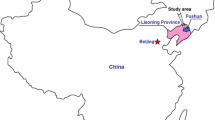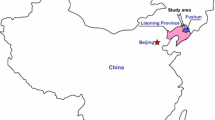Abstract
A number of methods for predicting land subsidence and monitoring deformation under high-speed railway tracks exist, and are divided into three categories: layer-wise summation, numerical calculations based on consolidation theory, and curve fitting. One of these, curve fitting, including the hyperbola, expanded hyperbola, three-point fitting and Asaoka methods, is widely used because it is computationally simple and applicable in many situations. In this paper, we analyze the performance of the four classical curve fitting methods using field data and propose a novel approach to estimate land subsidence. The new method integrates three-point fitting, which is computationally simple whilst stringent in terms of correlation restrictions, with the Asaoka method to significantly improve performance in practical applications. Our experimental results indicate the average relative error of the modified method is reduced by 35.3 % than that of three-point fitting, and the mean correlation coefficient remains within acceptable bounds and even was enhanced by 1.48 %, so that this modified method can substantially improve prediction precision.






Similar content being viewed by others
Notes
Passenger Dedicated Ballastless Railway Track Laying Condition Assessment Techniques Guideline.
References
Li M (2009a) Deformation monitoring and assessment technology for substructure of unballasted track on railway. Eng Sci 11(1):48–59
Li M (2009b) Deformation monitoring and assessment technology for substructure of unballasted track on railway passenger dedicated line. Railw Constr Technol 2:59–69
Wang X (2009) Research of prediction method for subgrade settlement on railway passenger dedicated line. Doctor Doctoral dissertation, Wuhan Institute of Rock & Soil Mechanics, Chinese Academy of Sciences, P. R. China
Xiong S, Song J, Zhou Q (2010) Theory and practice of settlement observation and evaluation of high speed railway. China Railway Publishing House, Beijing
You C (2007) The integration concept on observation and evaluation of ballastless track. J Railw Eng Soc 24(3):25–28
You C, Li D (2005) Settlement and deformation of passenger dedicated line and its countermeasure. J Railw Sci Eng 2(5):9–12
Zhang M, Guo F (2007) Related technologies for railway passenger-dedicated line. Chin Railw 12:7–12
Zhou M, Zhou Q, Chen S (2010) Discussion on the settlement observation and evaluation model of passenger dedicated railway line. Railway Standard Design 2:7–10
Acknowledgments
This research is supported by Educational Commission of Hebei Province (No. Z2012109) at the Shijiazhuang Institute of Railway Technology at Shijiazhuang.
Author information
Authors and Affiliations
Corresponding author
Rights and permissions
About this article
Cite this article
Chen, R., Li, D. & Xu, Y. Analysis and Improvement of Fitting Models for Predicting Subsidence Under High-Speed Railway Lines. Geotech Geol Eng 34, 29–35 (2016). https://doi.org/10.1007/s10706-015-9926-0
Received:
Accepted:
Published:
Issue Date:
DOI: https://doi.org/10.1007/s10706-015-9926-0




